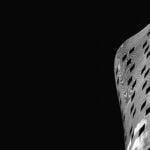Step back in time and venture into the mesmerizing world of Ancient China’s acupuncture, a practice steeped in centuries of tradition and profound wisdom. In this article, we will delve into the depths of history, unearthing rare and fascinating facts about this ancient healing technique. Prepare to be captivated by the origins, techniques, and enduring impact of acupuncture in Ancient China. Join me on a journey that will unveil the mysteries and unveil the wisdom of this extraordinary practice. Get ready to embark on a captivating adventure, as we explore the intriguing world of Ancient China’s acupuncture.
Ancient China Acupuncture Facts
Acupuncture, an ancient Chinese practice that involves inserting thin needles into specific points of the body, has a rich history spanning over 4,000 years. This cornerstone treatment in traditional Chinese medicine is rooted in the dualistic cosmic theory of yin and yang, which represents opposing forces in both the human body and the natural universe. The belief is that imbalances or preponderances of yin and yang lead to disease or physical disharmony. The goal of Chinese medicine, including acupuncture, is to restore balance between these forces, promoting overall health and well-being.

Confucianism’s Influence on Acupuncture
Confucianism, a renowned philosophical system in Ancient China, opposed anatomical dissections and surgical interventions, as it considered the human body sacred and intact. This opposition paved the way for the development of acupuncture as an alternative healing practice. Acupuncture aligned with the principles of Taoism, emphasizing harmony between man, his internal self, and the external world. It was seen as a way to treat diseases based on this ideology.
The practice of acupuncture emerged as a response to Confucianism’s opposition to anatomical interventions, resulting in the development of a unique healing art form that acknowledges the interplay between man and his surroundings.
The Evolution of Acupuncture Over Time
Acupuncture has a fascinating history in Ancient China, with evidence suggesting its practice for over 2,000 years, and some claiming even longer. Throughout this time, acupuncture has undergone advancements in tools and techniques used to administer it. These improvements have enhanced precision, effectiveness, and patient comfort.
Over the centuries, acupuncture has continuously evolved, improving its methods and tools to provide more precise and comfortable treatments for patients.
The Global Recognition of Acupuncture
While acupuncture originated in Ancient China, it has gained worldwide recognition and is now utilized as a medical technique in various parts of the world. This recognition stems from its proven ability to effectively relieve pain, cure diseases, and improve overall health. Acupuncture’s positive impact on countless individuals has made it an integral component of modern alternative and complementary medicine.
Acupuncture’s global recognition as a valuable and effective therapy highlights its remarkable ability to alleviate pain, restore health, and improve well-being.
Debunking Misconceptions
It is essential to address and dispel misconceptions surrounding acupuncture and traditional Chinese medicine. It is vital to understand that the medicine practiced in China today may not be a true reflection of ancient practices. Like any medical system, it has evolved over time. While some critics may cast doubt on the effectiveness of acupuncture, the numerous success stories provide evidence of its positive impact on patients’ lives.
Despite misconceptions and skeptical perspectives, the real-life impact of acupuncture on countless individuals underscores its validity as an effective medical therapy.
In conclusion, the practice of acupuncture in Ancient China is a reflection of the profound wisdom embedded in the philosophy of yin and yang. From its roots as an alternative to Confucian opposition to surgery, acupuncture has evolved into an internationally recognized therapy. Its ability to restore balance, relieve pain, and treat diseases continues to captivate and benefit individuals worldwide.
Through its rich history and global impact, acupuncture reveals itself as a time-honored healing practice that unlocks the potential for well-being and harmony within the human body.
Acupuncture has been practiced in China for thousands of years, and there are fascinating facts about its origins and uses that may surprise you. If you’re curious about the history and significance of acupuncture in ancient China, you definitely don’t want to miss out on these intriguing insights. Discover more about the ancient practice of acupuncture by clicking here: Facts About Acupuncture In Ancient China. Explore the ancient wisdom and traditions that have shaped acupuncture into the respected therapy it is today.
FAQ
Question 1
What is acupuncture?
Answer 1
Acupuncture is an ancient Chinese art that involves the insertion of thin needles into specific points of the body to relieve pain or treat illness.
Question 2
How long has acupuncture been practiced?
Answer 2
Acupuncture has a history of more than 4,000 years and is considered a cornerstone treatment in traditional Chinese medicine.
Question 3
What is the philosophy behind acupuncture?
Answer 3
The practice of acupuncture is based on the dualistic cosmic theory of yin and yang, which act as forces in the human body and throughout the natural universe. Imbalances or preponderances of yin and yang are believed to cause disease or physical disharmony.
Question 4
Why was acupuncture developed?
Answer 4
Acupuncture was developed as a response to Confucianism’s opposition to anatomy and surgery. Confucianism believed that the entire body is sacred and must remain intact, making practical interventions on the human body unacceptable.
Question 5
What is the goal of acupuncture in Chinese medicine?
Answer 5
The goal of Chinese medicine, including acupuncture, is to restore balance between yin and yang, thus promoting health and well-being.
- Graford, Texas: Discover Small-Town Charm and Possum Kingdom Lake Adventures - November 23, 2024
- Discovering Cranfills Gap, Texas: A Norwegian Heritage Gem - November 23, 2024
- Cotulla, Texas: A Deep Dive into the History, Heritage, and Hidden Gems of La Salle County’s Seat - November 23, 2024














